As part of our walking tour of Christchurch, we walked to one end of town and visited the spectacular Botanic Gardens. They’re open to the public – free – and it’s a huge place. We were so impressed with the Gardens. Of course, it’s springtime in New Zealand right now, so the trees and shrubs, ground cover and grasses were just at their peak of bright green and growing.
Archives
Recent Posts
Currently Reading
Tasting Spoons
Posted in Desserts, on December 20th, 2010.
Sorry I don’t have a photo of the whole cake. This was from a cooking class with Phillis Carey, and it was phenomenal. This may have been my favorite item from a double-whammy cooking class my friend Cherrie and I went to. Two cooking instructors, both teaching recipes for a full meal. Our portions, of course, weren’t huge. Just enough to get a sufficient taste, but oh, were we ever full when we walked out of that class!
We watched Phillis make this torte – it’s a light-as-a-feather sponge cake with chocolate chips that sink to the bottom. And flavored with amaretti (the almond-flavored Italian meringue cookies), and whipped cream flavored with the liqueur, Amaretto. The cake is mostly like any other sponge cake (where you whip up the whites and gently fold them into the egg-rich cake batter). This one just has the cooking crumbs folded in too, plus the chocolate chips. Don’t use chop-up-yourself chocolate in this – you need to use ready-made chocolate chips. And do slice it with a serrated knife, okay? Don’t refrigerate the cake – it’s okay to make it one day ahead. It also freezes well. You’ve gotta make this cake if you enjoy almond flavorings. And chocolate.
Chocolate Amaretti Torte
Recipe By: From a cooking class with Phillis Carey, 12/2010
Serving Size: 8
NOTES: Cake can be doubled, using same pan; just increase baking time. If you can’t find amaretti cookies, use any kind of almond-flavored cookie and crumble it up finely. Cake freezes well. Can be made the day before, but cover and leave at room temp. Don’t refrigerate the cake.
unsweetened cocoa powder for dusting springform pan
1 cup unsalted butter — softened
3/4 cup sugar
5 whole egg yolks
1/2 cup Amaretti di Saronna cookies — crumbled
1/2 cup flour
1 cup semisweet chocolate chips — (don’t use your own chopped chocolate)
6 whole egg whites
1 pinch cream of tartar
sifted powdered sugar for garnish
1 cup heavy cream
2 tablespoons sugar
3 tablespoons Amaretto
1. Preheat oven to 350°. Butter a 9-inch springform pan and dust with unsweetened cocoa powder, shaking out any excess. Cut a circle of parchment paper and place in bottom of pan.
2. Using a mixer, cream butter with sugar until very fluffy and almost white in color. Beat in yolks one at a time, blending well after each addition. At low speed gradually add Amaretti crumbs and flour. Fold in chocolate chips.
3. In a completely clean and dry bowl beat egg whites (yes there is one more egg white used than egg yolks used) with cream of tartar until stiff peaks form. Stir 1/4 of the whites into the cake batter to lighten it some, then gently fold in the remaining whites. Spread in prepared pan and bake 35-40 minutes or until cake tests done and pulls away from the edge of the pan. The chocolate chips will sink to the bottom.
4. Cool cake in pan on a rack for 30 minutes. The cake will shrink some. Loosen edges of cake and remove springform rim. Turn cake over onto a rack and remove springform bottom and allow to cool (upside down) completely. To serve, invert cake right side up onto a serving platter and dust generously with powdered sugar. Use a serrated knife when cutting the cake.
5. Whip heavy cream with sugar until peaks will hold shape, then gently add Amaretto. Serve slices of cake with a mound of whipped cream on the side. May decorate with fresh raspberries if desired.
Per Serving: 651 Calories; 45g Fat (61.4% calories from fat); 8g Protein; 56g Carbohydrate; 1g Dietary Fiber; 236mg Cholesterol; 70mg Sodium.
A year ago: Zov’s Lentil Salad
Two years ago: Seafood Bisque
Three years ago: Almond Custard
Posted in Appetizers, on December 18th, 2010.
The toasted baguette slices have been rubbed with an orange – the skin – and the orange peel/oil sticks to the rough edges on the bread. At left is a mound of curd ricotta (it’s whole-milk ricotta that still has some of its curds intact) with a mixture of orange honey and truffle oil on top – and some cracked pepper.
If you need an appetizer that you can make ahead, here’s an easy one. It does require just a bit of last-minute assembling, but it’s not difficult or time consuming. The original recipe for this came from Locanda Verde Restaurant in TriBeCa in NYC. How Diane Phillips (cookbook author and cooking instructor) got it, I don’t know. Maybe there’s a cookbook out? Ah yes, there is: Andrew Carmellini, the chef/owner of the restaurant has written a cookbook: Urban Italian: Simple Recipes and True Stories from a Life in Food.
The appetizer is a subtle tasting one – mild, actually. Understand what I’m saying here – it hasn’t got blowout flavors, but it has lovely nuances of orange. And softness from the ricotta. And a bit of umami from the truffle oil. Give it a try over the holidays. But I wouldn’t serve it along side an appetizer with huge flavors – that would overpower this one. Make it the appetizer of the evening. I’d serve it with Prosecco, that light Italian sparkling wine. Or champagne, of course. Or serve it as an appetizer for a brunch with a mimosa!
Ricotta Drizzled with Truffle Honey on Orange Crostini
Recipe By: From a cooking class with Diane Phillips, 12/2010
Serving Size: 8
NOTES: Try to find whole milk ricotta that’s still in its soft-curd form available at some specialty Italian markets. Use regular grocery store whole milk ricotta if you can’t find the other.
1 whole baguette — (about 24 slices)
2 large navel oranges — skin scrubbed of any wax
2 cups ricotta cheese — whole milk only
1/2 cup honey — orange blossom
1/4 cup white truffle oil
freshly ground black pepper to taste
1. Preheat oven to 400°. Arrange baguette slices on baking sheet lined with a Silpat, foil or parchment paper. Bake baguettes until crisp.
2. Remove bread from oven and rub the orange skin on the baked slices. Some of the orange oil will transfer to the bread. Store cooled baguette slices airtight and at room temp for up to 2 days.
3. In a small decorative bowl stir the ricotta. In a second small bowl combine the honey and truffle oil. Sprinkle the top with freshly ground black pepper and drizzle this mixture over the ricotta cheese. Serve baguette slices alongside. If you prefer a more spicy mixture, add more pepper.
Per Serving: 403 Calories; 16g Fat (36.2% calories from fat); 12g Protein; 53g Carbohydrate; 2g Dietary Fiber; 31mg Cholesterol; 398mg Sodium.
A year ago: Apple Raisin Custard Cake
Two years ago: Spiced Peaches
Three years ago: Chicken and Dumplings (oh, is this yummy)
Posted in Travel, on December 17th, 2010.
Back to some travel stories . . . After spending several days in Sydney, some folks left for home and 8 of us went on to New Zealand. Having never been there and having seen little more than photos of the Milford Sound and plenty in travel books, I didn’t know what to expect. So I shot a few photos from the air. There is some haze, but what’s visible there is green. And more green. And more green. Darker green, lighter green, lakes and water. Lovely.
Christchurch isn’t exactly a huge city – a small city, I’d say. We stayed in a hotel right smack dab in the middle of town so it was easy to walk anywhere.
There was a big earthquake in Christchurch in September and it did some damage to older structures. A unique thing about New Zealand is that the island is right on top of two Tectonic plates, so the island is very prone to earthquakes. But this 2010 one was quite serious. There were no injuries, partly due to NZ’s extremely strict building codes. I remember reading about it in September, that structural damage was minimized because the country has insisted on earthquake-proof codes for both commercial buildings and homes.
In the picture above you can’t see any damage – they’d repaired what minimal problems there were, but just a few blocks away here’s what we saw:
This is an old church – Presbyterian I think – that was built long before civil engineers knew what to do to build more earthquake resistant structures. They expected to be able to repair this church, but meanwhile they have props surrounding the building to keep it from crumbling even more.
Here’s a sculpture (no, it’s not earthquake damage) in a small Christchurch park – it’s to honor and commemorate 9/11 and it’s a loose replica of some of the girders and beams from the World Trade Center, showing the one that looks similar to a Christian cross.
We criss-crossed our way all around Christchurch. It’s a quaint little city and easy to get around in. And we were quite impressed with all of their parks. Just like the Aussies, the NZlanders set aside more than ample (at least by American standards) park lands for everyone to enjoy.
Here’s another photo of an older Christchurch building with props holding it up. Holding it in place. I loved the striking phone booths there. I don’t know if it’s a national thing, or just in Christchurch, but the phone booths are somewhat similar to British ones. Cute. Red.
We’re losing phone booths here in this country. What with cell phones so readily available, one can be hard pressed to even find a phone booth here in the U.S.
Here, at right, was a sign we saw somewhere in Christchurch showing two of the indigenous birds (kiwi and uhm. . . what is that other bird?). Kiwi birds are not exactly cute. They’re flightless, though. Did you know that most larger birds in Australia and New Zealand are flightless? Because those two countries were not destroyed during the Ice Age, the animals lived through it – they are almost prehistoric and they don’t have predators. Hence their wings have, through evolution, been lost. We never saw a live kiwi while we were there, sad to say.
Here’s a little something to give you a laugh. In New Zealand no one refers to one’s derrier as buns. Instead, they’re sweet rolls or sandwiches. Our guide, Marilyn, pointed out this little cafe sign, saying that she really did, but didn’t understand it, why Americans always think it’s so funny!
Sure enough, we all laughed.
Christchurch has a very efficient rail system – considering that it’s a small city, we were all impressed.
This trolley car seems like it’s right out of the 1940’s or so, doesn’t it?
Both Australia and New Zealand have plenty of Victorian style homes. I tried to take a whole lot of suburban home photos from our different rides around cities in both countries, but all of them were blurred. This one, this cute little, narrow Victorian, was just a few blocks from downtown Christchurch. I just thought it was adorable. Not that I’d want to live in one, but this happened to be a particularly attractive Victorian.
By the time we had walked for a couple or so miles around the city and the Botanical Gardens (a post about that tomorrow or the next day), we passed this sign about Ron Mueck, a well-renowned Australian sculptor. A few of our group went to the museum to see the display. The woman you see there (a photo of the sculpture) is a Maori (pronounced mao-ree, and say it real fast). Those who went, exclaimed over the exhibit. The sculptures are very life-like and life-sized too. Amazingly life-like, apparently. Dave’s legs were really hurting him after our long walk, so we didn’t ever get back to see the exhibit.
This photo (right) is from Wikipedia, and shows one of Mueck’s most famous sculptures.
I’d think that would be eerie to be in a museum and come upon that head sculpture!
We did take a bus tour one day. I took a dozen pictures of the Christchurch skyline from the ridge we were on here. Christchurch doesn’t have any particular landmarks, to speak of. But it was so clear and pretty. That’s ocean off in the distance.
And here’s a photo of Marilyn, our wonderful guide. She was speaking there, about the building behind her – Christ’s College – Canterbury, just adjacent to the Christchurch Botanical Gardens.
We watched lots of students walking in and out – all wearing their school (required) uniforms. Much like in Britain.
I think it’s at Oxford, in England, where they’re all required to wear the black flowing robes. Am I right?
There is a stream that meanders through part of Christchurch. I don’t remember its name, but it was so lovely. Made for some good picture-taking.
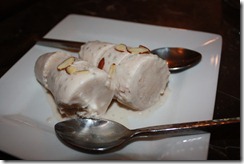 I mentioned in my earlier post (while we were ON the trip) that we had some fantastic Indian food in Christchurch. It may have been the best Indian food I’ve ever had. It was that good. One of the couples from our trip went with us – they’re from the Midwest and had never had Indian food – period. It was right on Cashel Street – one of the main streets of Christchurch, with the cutest name – The Last Train to India. I had a lengthy conversation with our waiter about different dishes they made – we had butter chicken, some onion kulcha, a lamb dish, another chicken dish, some delicious pilaf rice, and I asked for a vegetable dish. He brought lentils. Now I wouldn’t ordinarily have ordered a carb billed as a “vegetable,” but when it came, what could I say? And oh, was it delicious. For me it may have been the star of the dinner. It was black lentils in a kind of brown gravy. A rich, thick, silky gravy. I asked the waiter to write down the name of this dish – he did, but now I can’t find the little snip of paper it was on. Darn! I remember he said it was a “truck stop” kind of lentil dish – nothing fancy. It was just so, so good. At the end we ordered some ice cream – I think it was coconut. Came out in a kind of log shape. It was delish too. I’d be eating at this restaurant once a week if it were in California! It’s a long flight for an Indian dinner, sadly!
I mentioned in my earlier post (while we were ON the trip) that we had some fantastic Indian food in Christchurch. It may have been the best Indian food I’ve ever had. It was that good. One of the couples from our trip went with us – they’re from the Midwest and had never had Indian food – period. It was right on Cashel Street – one of the main streets of Christchurch, with the cutest name – The Last Train to India. I had a lengthy conversation with our waiter about different dishes they made – we had butter chicken, some onion kulcha, a lamb dish, another chicken dish, some delicious pilaf rice, and I asked for a vegetable dish. He brought lentils. Now I wouldn’t ordinarily have ordered a carb billed as a “vegetable,” but when it came, what could I say? And oh, was it delicious. For me it may have been the star of the dinner. It was black lentils in a kind of brown gravy. A rich, thick, silky gravy. I asked the waiter to write down the name of this dish – he did, but now I can’t find the little snip of paper it was on. Darn! I remember he said it was a “truck stop” kind of lentil dish – nothing fancy. It was just so, so good. At the end we ordered some ice cream – I think it was coconut. Came out in a kind of log shape. It was delish too. I’d be eating at this restaurant once a week if it were in California! It’s a long flight for an Indian dinner, sadly!
Posted in easy, Veggies/sides, on December 16th, 2010.
I know, I know. Most people don’t like Brussels sprouts. But I do, my DH does, and this is such a simple and delicious way to serve them. If you don’t like cooked cabbage, well, then there may be no hope for you. Just skip this recipe.
What this is, is EASY. You halve the Brussels, then cut into thinner yet slices, cook them in a bit of olive oil, add water and butter and cook for just a very few minutes. Then you add in some toasted pine nuts. See? I said it’s easy. And quick. Well, unless you need to toast pine nuts first – it’s faster to do them in a small dry frying pan (nonstick), but you’ve got to watch them very, very carefully. Once they’ve warmed up in the pan, they can go from normal raw to burned in a matter of about 15 seconds or less. This recipe came from Phillis Carey.
Shredded Brussels Sprouts with Pine Nuts
Recipe By: From a cooking class with Phillis Carey, 12/2010
Serving Size: 6
1 pound Brussels sprouts
Salt and pepper to taste
2 tablespoons olive oil
1/2 cup water
2 tablespoons unsalted butter
1/4 cup pine nuts — toasted
1. Cut off stems, then halve Brussels sprouts lengthwise. Cut lengthwise into thin (1/8 inch) slices.
2. Heat oil in large skillet over medium high heat. Add sprouts; sprinkle with salt and pepper. Saute until brown at edges, about 6 minutes. Add water and butter and continue cooking until most of the water has evaporated and sprouts are tender but still bright green, about 3 minutes.
3. Toss in the toasted pine nuts and serve immediately.
Per Serving: 135 Calories; 11g Fat (70.8% calories from fat); 4g Protein; 7g Carbohydrate; 3g Dietary Fiber; 10mg Cholesterol; 18mg Sodium.
A year ago: Cranberries – everything you’ve always wanted to know about them
Three years ago: Gulliver’s Creamed Corn
Posted in Travel, on December 15th, 2010.
Surely I didn’t know much about the Sydney Opera House when we visited that city. Oh course, I knew of it, having seen countless pictures of the outside over the years. I knew we were going to have a tour of the facility, and that I’d likely get some nice photos of it. I knew where it was located in the harbor. With its unique architecture. But I was unprepared for the splendor of it. The majesty of it. The beauty of it. Plus the awe I felt viewing the inside of it too. And the music? Oh my goodness. Was I impressed!
On the tour we learned a lot about the architecture – and more specifically about the Danish architect, Jorn Utzon, himself. He was a johnny-come-lately with a hand-sketched design (no professional drawings or blueprints at all). We learned about how much money it took to build the House (initially it was projected at 3 million – it eventually cost 103 million), and so many more years than planned to complete it. And about how the city removed the architect toward the end of it, although they did abide by his original plan. Many people in the city were outraged at the costs involved. The architect never submitted a construction estimate – he was merely the designer. Once selected he worked furiously to make the design work. Unfortunately he died in 2008, never having seen his completed masterpiece.
Fortunately, the one free night we had in Sydney there was a performance by the Sydney Symphony. Weeks ahead I’d purchased (online) two tickets for $92 apiece, when there were no more than a handful of seats left. The interior of the Opera House is the color you see in the photos.
In the top picture you can see where we were seated, about 6-7 rows from the back wall! (You’re not supposed to take photos inside the concert hall, but lots of people were doing it, so I took one without flash.) The bottom photo was taken on the tour we did, in front of the orchestra area. The clear spheres above are acoustical additions to assist the musicians to hear one another. Seated as we were (for the concert) as high as we were, we anticipated we might not get the best sound. Not so – it was superb. The concert itself, called Arabian Nights, was without a doubt, the most beautiful classical concert I’ve ever heard. Probably because of the magic of the Sydney Opera House. The symphony musicians were exceptional. The first violin played several solo parts – he was amazing! We heard music from Spartacus (the ballet) by Khachaturian, a piano concerto by Saint-Saens, and the capstone of the evening was Rimsky-Korsakov’s Scheherazade – Symphonic Suite, Opus 35.
Here’s one more photo taken outside, but we were standing in between some of the shells. The design is quite remarkable. Go online to read more (see link up top).
Posted in Travel, on December 14th, 2010.
Sydney Bridge is just beautiful. Striking looking. Graceful. We saw it in bright sunshine, clouds, rain and darkness. Now just picture yourself climbing up the top. It’s done, and several in our group did it. Here’s a photo where you can see the climbers:
See those little matchsticks? People. In safety gear, hooked onto the bridge (there have been no accidents since they’ve been offering this treat to excitement-seekers). Four in our group went on the climb and said it was glorious. Not difficult (the guide pauses frequently for story-telling and to offer time for photographs). I guess the views were spectacular. It takes several hours to do it (including all the suiting-up time prior to the start of the climb). Maybe next time I go to Sydney I’ll do that.
There’s a more expansive view of the city. You can barely see the Opera House just to the left of the bridge. Then the city proper further left, obviously.
Further out is the entrance to Sydney Harbor – the headlands off in the distance. It was a spectacular day for photos – not even a hint of muck in the air. I don’t think Australia has smog anyway.
There’s a photo of Bondi Beach. And did you know it’s pronounced bond-eye, not bondee as I’ve always heard it. Bondi is an aboriginal word. I think it means something like blue water, or sandy beach, or similar! It was a lovely day there too with some people sunbathing on the beach. We savored a nice latte as we enjoyed the sunshine.
I must say the Aussies know how to make some mighty good coffee (strong) and coffee drinks. We had lattes in lots of places in both Australia and New Zealand. They were all great.
The clouds were spectacular that day as we took a harbor cruise. This was just before the darker clouds moved in and dumped some rain on us, but it was short-lived.
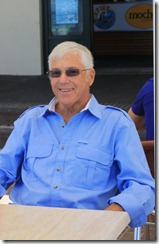 There’s a photo I took of my DH Dave as we sat enjoying our coffee at Bondi Beach.
There’s a photo I took of my DH Dave as we sat enjoying our coffee at Bondi Beach.
One of the other major sites in Sydney is Darling Harbour, or the Circular Quay. At one end you can see the harbor but it’s an area developed prior to the Olympics held in Sydney some years back. People thought it would be an eyesore after the Olympics had come and gone, but it’s a huge tourist attraction and a gathering place for the locals too. Mostly it’s restaurants, but there’s also an IMAX theater, and some shops too. There’s a park, an area for buskers or entertainers to do their thing, a green grassy area, some fountains. Also the Sydney Aquarium and the Maritime Museum. It’s a HUB of activity. We had one mediocre meal there, and another fantastic meal there. I want to return to Sydney. Some day.
Posted in easy, Veggies/sides, on December 13th, 2010.
Wouldn’t you think a carrot is just a carrot? Wrong. A roasted carrot takes on a delicious caramelized exterior – it brings out the sugar in carrots. Just succulent as can be. I think I could eat a plate full of these. And they’re SO easy. I mean it. Slice carrots (on a diagonal), toss with fresh thyme, oil and salt and pepper, roast with a few dots of butter for about 20-30 minutes and you’ll have just the best carrots ever. How quick is that? I have roasted carrots before, but the combo with fresh thyme (my favorite herb) just gave it better dimension. Make these, okay? The recipe is from Phillis Carey, my favorite cooking diva.
Roasted Carrots with Thyme
Recipe By: From a cooking class with Phillis Carey, 12/2010
Serving Size: 6
2 pounds carrots — medium sized, peeled, cut on deep diagonal in 1/2-inch pieces
1 1/2 tablespoons olive oil
1 1/2 teaspoons fresh thyme
1 1/2 tablespoons unsalted butter
Salt and freshly ground black pepper
1. Preheat oven to 400°.
2. Toss carrots, oil and thyme in a large bowl. Season well with salt and pepper. Spread in a single layer on a large parchment-lined baking sheet; dot with butter.
3. Roast carrots until tender and light golden, stirring occasionally, 20-40 minutes (depends on the thickness of the carrots).
Per Serving: 113 Calories; 6g Fat (49.1% calories from fat); 1g Protein; 14g Carbohydrate; 4g Dietary Fiber; 8mg Cholesterol; 48mg Sodium.
A year ago: a photo of my kitchen Christmas décor
Two years ago: Apricot Thyme Cookies
Three years ago: Hot Buttered Rum
Posted in Travel, on December 11th, 2010.
 Not being much of a horticulturist, I know only that the left one is a ginger flower. They’re just pretty and I enjoyed looking at them. The picture at left is the outdoor lobby at the Sea Temple Resort where we stayed in Port Douglas, Queensland. What a place. Gorgeous, with huge pools, and a lovely restaurant. We had probably the nicest rooms on the entire trip at this resort. But it was hot and muggy, like Hawaii.
Not being much of a horticulturist, I know only that the left one is a ginger flower. They’re just pretty and I enjoyed looking at them. The picture at left is the outdoor lobby at the Sea Temple Resort where we stayed in Port Douglas, Queensland. What a place. Gorgeous, with huge pools, and a lovely restaurant. We had probably the nicest rooms on the entire trip at this resort. But it was hot and muggy, like Hawaii.
I’ve forgotten what these flowers are called as well. But they were hanging everywhere on the grounds of the Sea Temple Resort.
Cape Douglas is a major jumping-off point for tours of the Great Barrier Reef. And unfortunately I won’t be sharing any photos of that since I didn’t go (I get seasick and Dave didn’t want to carry the camera).
The day the group went to the GBR I took a local bus into town, shopped and had lunch. And blogged and emailed. Dave wasn’t as impressed with the Reef as he’d expected (but then, he didn’t dive or snorkel either one) but he did go on a glass-bottomed boat.
After spending two nights at the Resort, we bussed on up to Daintree National Park. Which entails boarding a small ferry, crossing the Daintree River, then proceeding on a curvy road further north into the park and along the edge of the rainforest. There are some residents of Daintree, but not many. One family purchased a plot of land that did host orchards, but the eco-heads decided it wasn’t appropriate to have a commercial orchard there, inside a rainforest, so they had to shut down the commercial side of fruit growing. Instead they lead rainforest tours, which we did. It was hard enough trying to walk in the rainforest (with all the vines, creepers, tree roots, rocks, crevices) but for Dave to do it with artificial legs was a monumental task. Yet he did it, by holding onto my shoulders with each step forward.
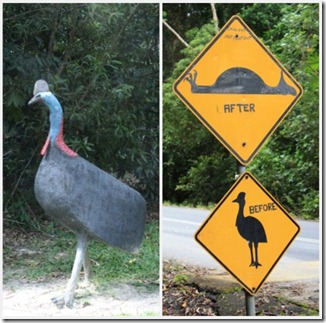 One of the elusive animals in the rainforest is the cassowary (a bird). They’re as tall, or taller than an adult human. The photo at left is a statue, near the entrance to the park, in case we didn’t see one, which we didn’t. The right photo is a sign right on the narrow highway about drivers being cautious, not running over a cassowary. The prehistoric birds live in very few places in the world and are endangered, I believe. One lives in and around the resort where we stayed – he’s not a pet – just that the resort environs are his territory. He tolerates the human encroachment on his territory. Unfortunately, he was not to be viewed!
One of the elusive animals in the rainforest is the cassowary (a bird). They’re as tall, or taller than an adult human. The photo at left is a statue, near the entrance to the park, in case we didn’t see one, which we didn’t. The right photo is a sign right on the narrow highway about drivers being cautious, not running over a cassowary. The prehistoric birds live in very few places in the world and are endangered, I believe. One lives in and around the resort where we stayed – he’s not a pet – just that the resort environs are his territory. He tolerates the human encroachment on his territory. Unfortunately, he was not to be viewed!
On our rainforest walk (in the filtered sunshine) we saw all kinds of interesting flora including the large tree at left. We were told its variety, but I didn’t write it down – it’s deadly poisonous. It has all kinds of other rainforest lore about it – none of which I remember! And on the right you can see a palm tree (fan palm, I think) in its journey to find sufficient light. The stem on that particular palm was about 40-50 feet long and it had finally found a place where it could attempt to grow straight up and catch some rays.
More scenery from within the rainforest, clockwise top right: Dave standing in front of one of the old trees near the front door of the resort. They just constructed an elevated pathway around both sides of it; a stick bug – the bug is pointing upward at about 12:05 (his head) and his tail is at about 12:35. The body of the stick bug is slightly darker color than the branches on which he was clinging; a view from the small river boat we cruised on, in and around the swamps and mangroves; one of the wider rainforest paths we walked.
More rainforest scenes: the pool at the resort – looks just like a natural rainforest pool, doesn’t it?; a view of the Daintree Tea Plantation. Hard to believe some folks actually started a tea plantation there some years back. I bought some of the tea – it’s okay. Nothing particularly unusual about it; and lastly a view from the river cruise of the mangroves. Note the light green color of the water.
A view from the narrow highway within the rainforest looking out at the blue Pacific.
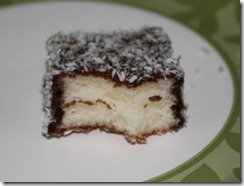 And here we have a Lamington. Marilyn, our guide, kept telling us about Lamingtons, and finally at Daintree they had them on a dessert tray. As the story goes, way back when the British were truly ruling Australia, Lord Lamington, then Governor of Queensland, went to visit somewhere. The cook had no dessert to serve him. But the cook had some leftover white cake. And chocolate. And coconut. Small pieces of cake were cut, dipped it on all four sides in melted chocolate, then sprinkled liberally with chopped coconut. A dessert was born, and it’s a favorite among the Aussies. I can’t say that it did anything for me . . .
And here we have a Lamington. Marilyn, our guide, kept telling us about Lamingtons, and finally at Daintree they had them on a dessert tray. As the story goes, way back when the British were truly ruling Australia, Lord Lamington, then Governor of Queensland, went to visit somewhere. The cook had no dessert to serve him. But the cook had some leftover white cake. And chocolate. And coconut. Small pieces of cake were cut, dipped it on all four sides in melted chocolate, then sprinkled liberally with chopped coconut. A dessert was born, and it’s a favorite among the Aussies. I can’t say that it did anything for me . . .
Posted in Beef, on December 10th, 2010.
Oh my, was this delicious. What’s there not to like about tender, juicy beef tenderloin? And succulent roasted mushrooms? The recipe is from a cooking class with Phillis Carey – such simple sounding fare, but just over the top delicious, I must say. It’s all made in the same pan and if you’ve timed your dinner just right, it all comes together perfectly. You need a good meat thermometer and a good roasting pan (not a rimmed cookie sheet) and you’re in biz.
You use the center third or so of a whole beef tenderloin. Now, I know buying a beef tenderloin is dear, but you’ll get ample meals out of it. This is just that middle portion (2-3 pounds or so) which will make an elegant dinner party extra special.
Do buy good mushrooms – you want the variety of oyster and shiitake as well as the crimini ones too. The mushrooms are so good when pan roasted, especially nestled up next to a beef tenderloin. If you want to serve a larger crowd, this recipe can be adapted to roasting a whole tenderloin – just increase the herb rub accordingly and fold the tapered end under so it doesn’t over cook. The baking time will be the same, just make more of the brandy sauce to go with it.
Herb Garlic Beef Tenderloin with Pancetta and Roasted Mushrooms
Recipe By: From a cooking class with Phillis Carey, Dec. 2010
Serving Size: 6
BEEF:
2 cloves garlic — minced
1 tablespoon fresh thyme — minced
1 tablespoon fresh rosemary — minced
1 large shallot — minced
2 1/4 pounds beef tenderloin — center cut
6 ounces pancetta
Salt and coarsely ground black pepper
MUSHROOMS:
6 ounces oyster mushrooms
6 ounces shiitake mushrooms — stemmed, halved
12 ounces crimini mushrooms — halved
1/4 cup olive oil
1/4 cup shallots — finely chopped
2 cloves garlic — minced
1 tablespoon fresh thyme — chopped
1 tablespoon fresh rosemary — chopped
SAUCE:
3/4 cup beef broth
3 tablespoons brandy
1 tablespoon unsalted butter — chilled
1. BEEF: Mix garlic, thyme, rosemary and shallot in small bowl. Sprinkle beef with salt and pepper, then rub herb mix over. Place beef in a roasting pan (center). Overlap pancetta slices on top to cover the meat. May be refrigerated up to this point for up to 24 hours.
2. MUSHROOMS: About an hour ahead mix mushrooms, olive oil, shallots, garlic and fresh herbs in a large bowl.
3. ROASTING: Preheat oven to 450°. Roast the beef for 15 minutes. Remove the pan just long enough to pour the mushroom mixture around the outside of the beef. Insert a meat thermometer in the center of the beef. Return pan to oven and roast for about another 10-15 minutes, or until the meat thermometer registers 120° (medium rare) or at the most, 125°. Stir the mushrooms once during the roasting time. Transfer beef to a warmed platter, surround it with the roasted mushrooms and tent the platter for about 15 minutes before slicing and serving.
4. Meanwhile, place roasting pan across two burners on the stove. Add broth and brandy to the pan; bring to a boil, scraping up any browned bits. Remove from heat and using a flat whisk, add the cold butter. Season with salt and pepper. Serve these juices over the beef and mushrooms.
Per Serving: 776 Calories; 53g Fat (61.9% calories from fat); 45g Protein; 29g Carbohydrate; 5g Dietary Fiber; 146mg Cholesterol; 1022mg Sodium.
A year ago: Pork Mini-Roast with Memphis Rub
Three years ago: Chocolate Steamed Pudding





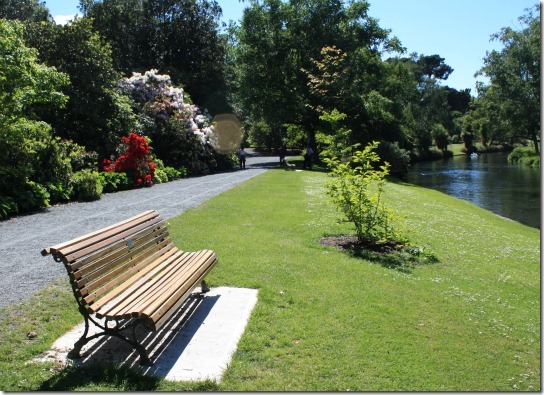

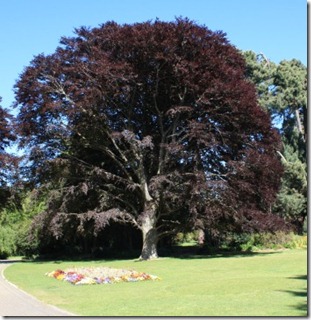


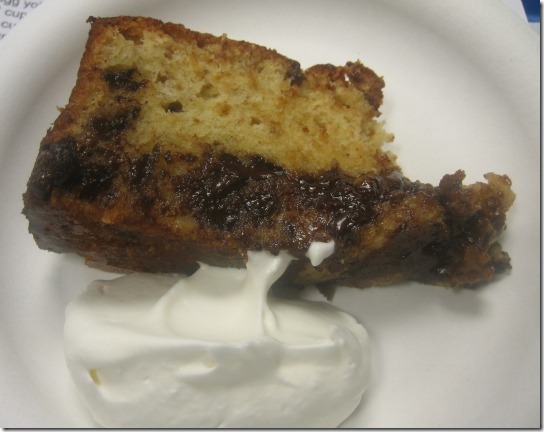
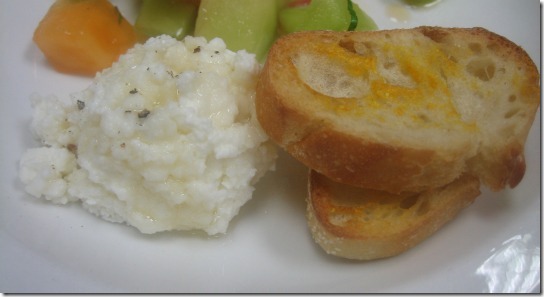
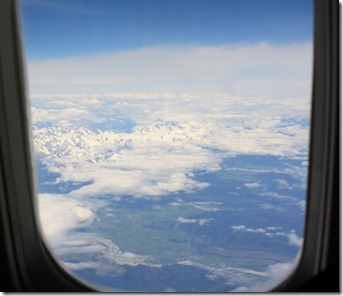
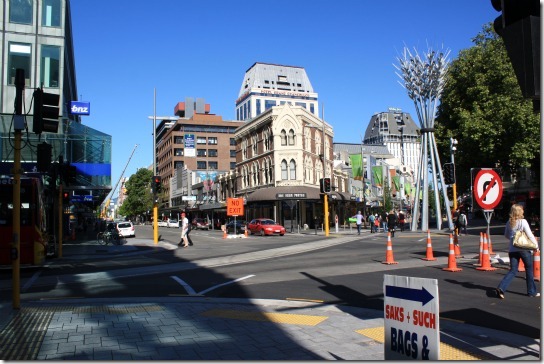
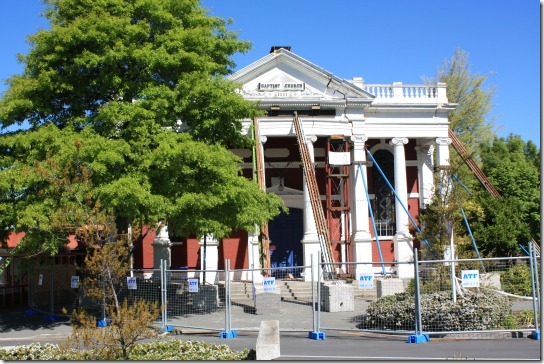
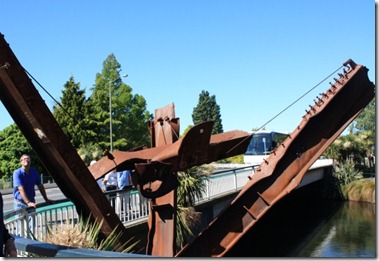
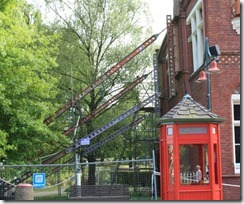
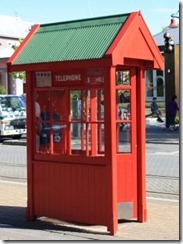
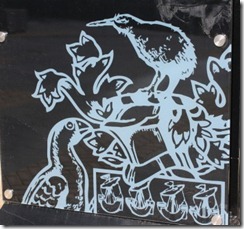
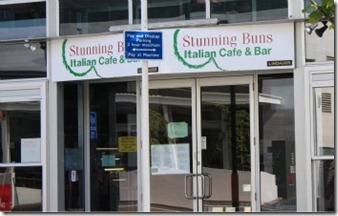
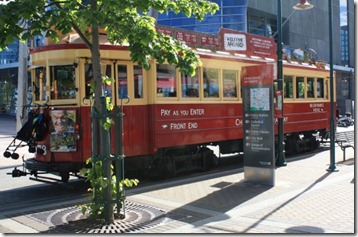
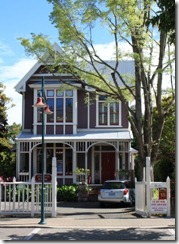
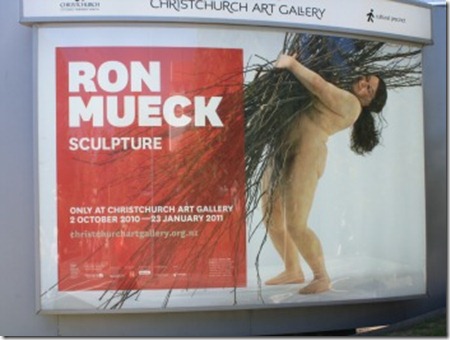

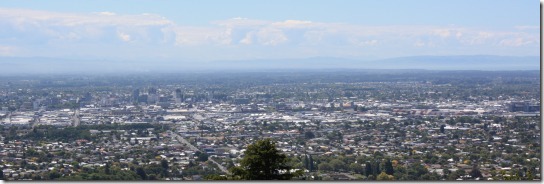
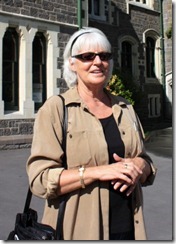
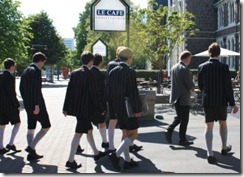
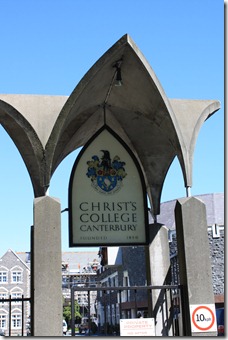
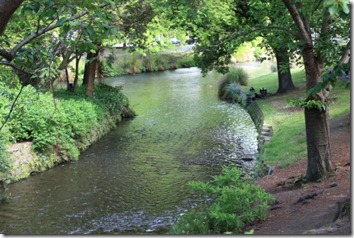
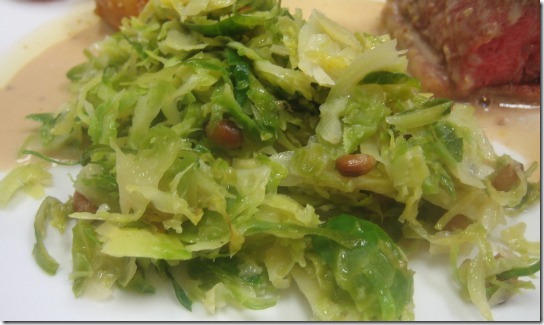
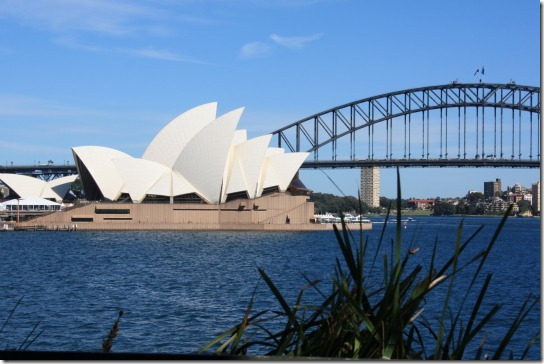
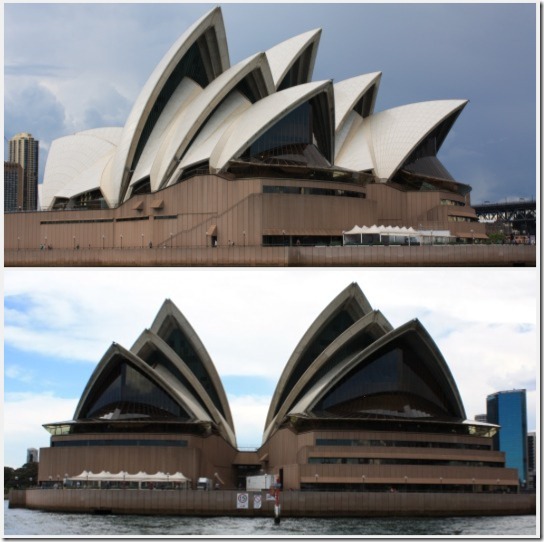
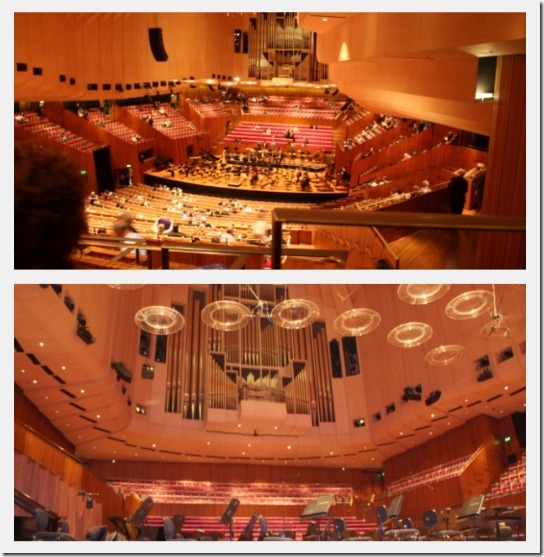
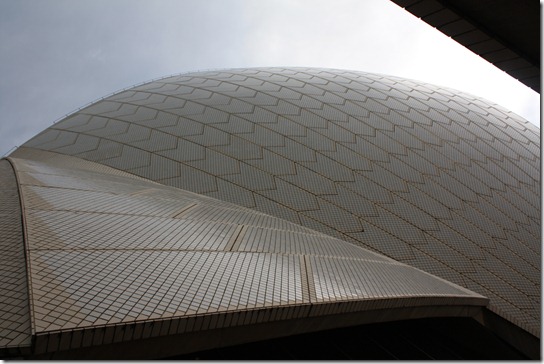
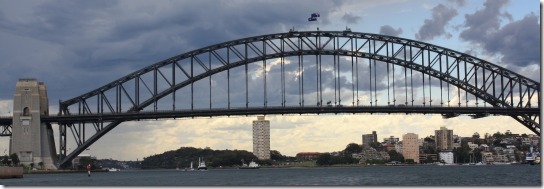
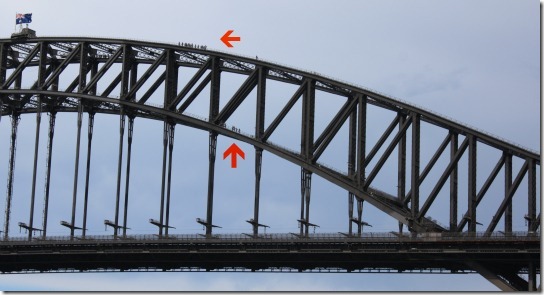
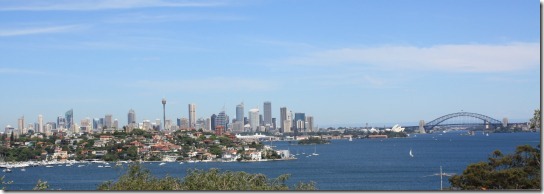

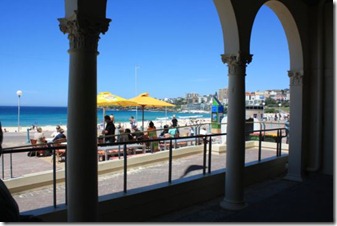
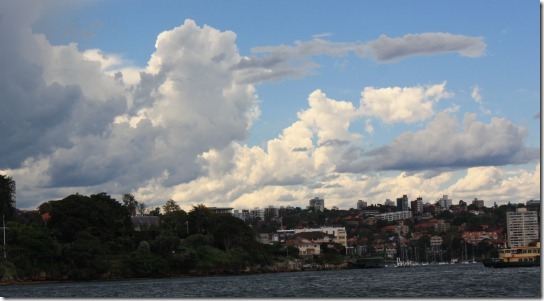
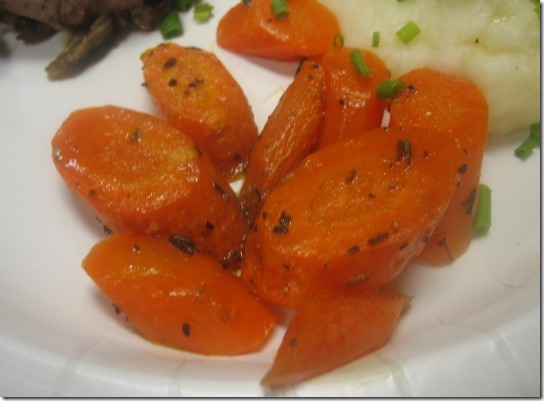
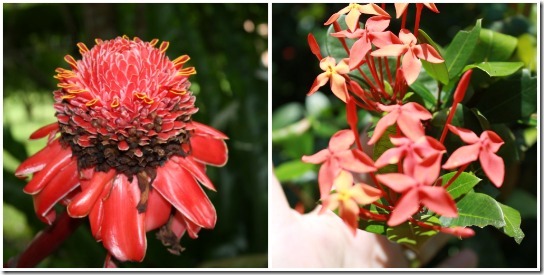
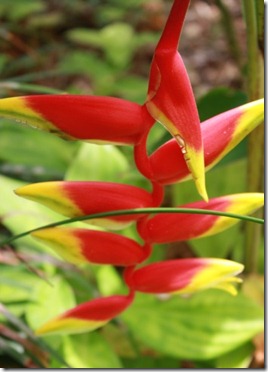
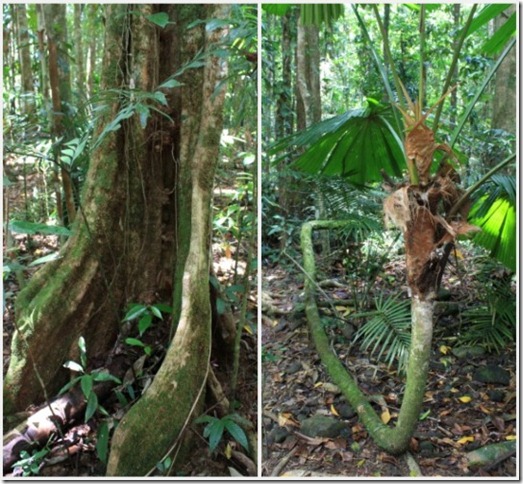
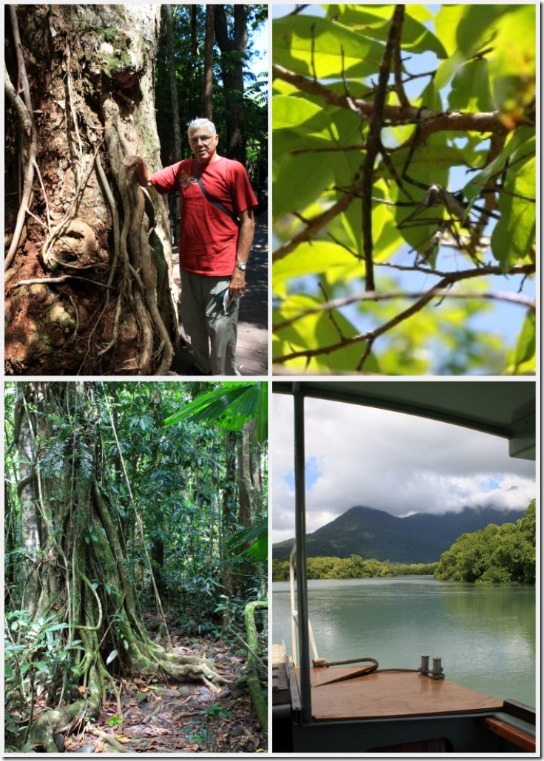
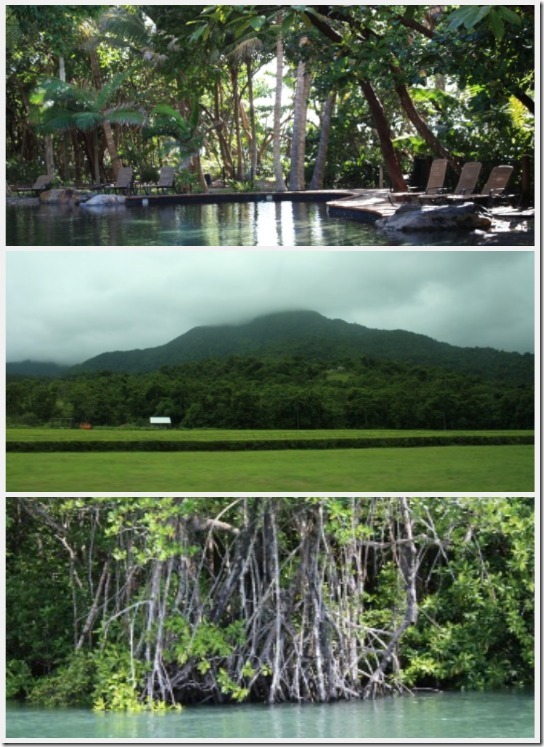
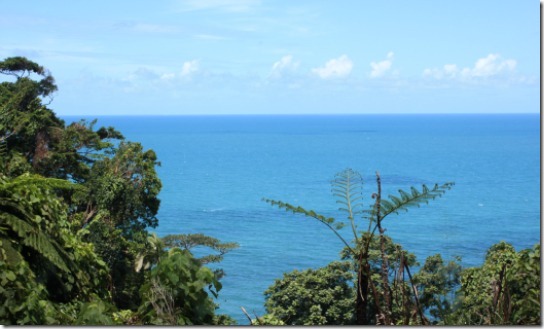
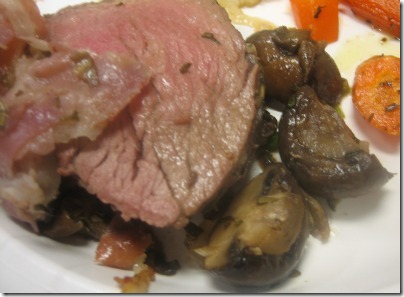
Leave a Comment!